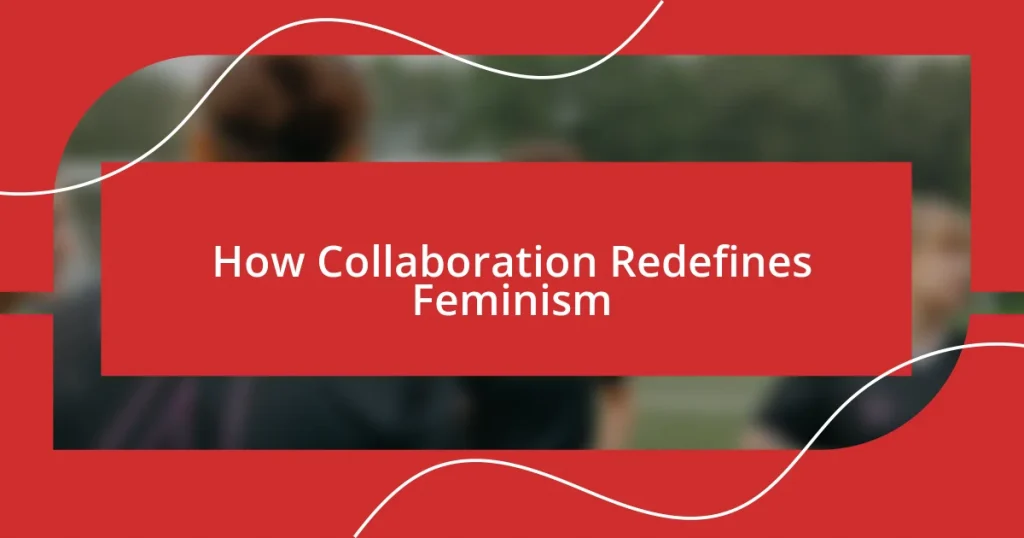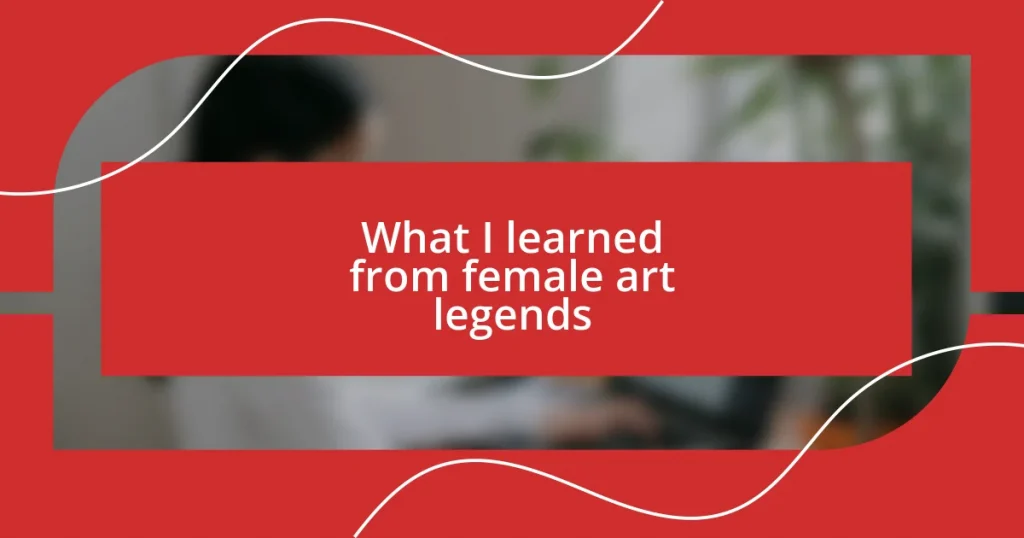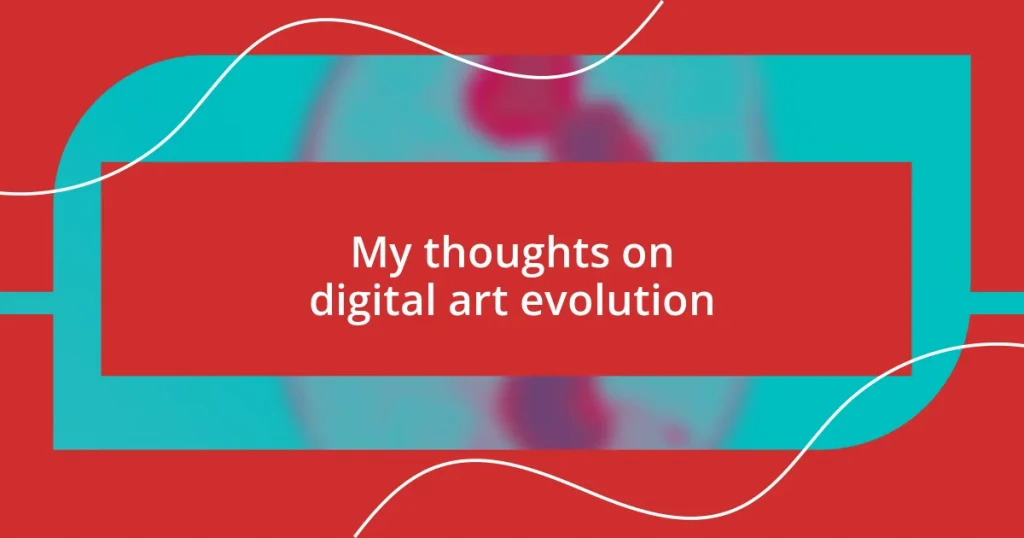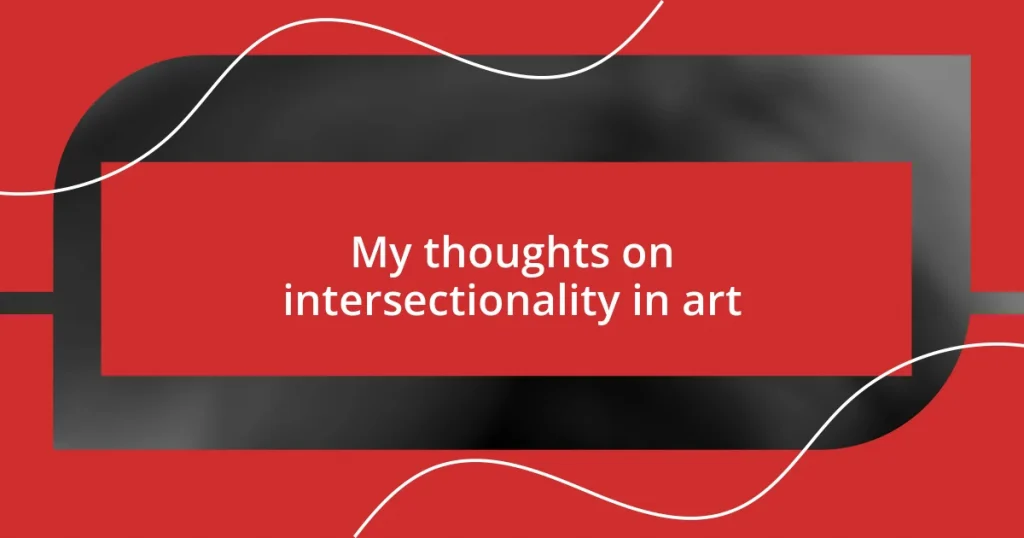Key takeaways:
- Feminism’s evolution is influenced by intersectionality, emphasizing the need to address the unique struggles of marginalized women.
- Historical collaboration among women, such as during the suffragist movement and the Women’s Liberation Movement, has been pivotal in advancing gender equality.
- Future feminist collaboration can thrive through technology, grassroots organizing, and partnerships with businesses, fostering a global network for change.
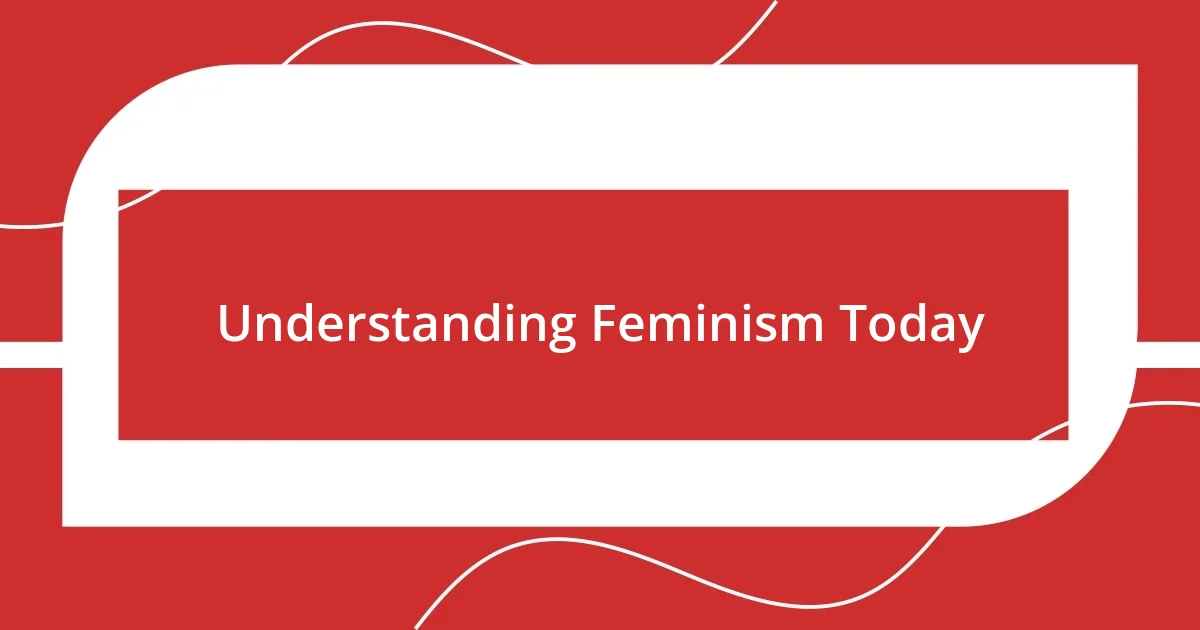
Understanding Feminism Today
Feminism today manifests in diverse forms, shaped by the unique experiences of individuals and communities. I often reflect on my own journey of understanding feminism, realizing that for many, it’s not just a movement but a personal awakening. How many of us have had those lightbulb moments where we finally grasp the breadth of gender inequality around us?
The intersectionality of feminism adds layers of complexity that I’ve come to appreciate. When I learned about how race, class, and sexuality intersect with gender, it shifted my perspective entirely. It made me think—how can we truly advocate for all women if we ignore the struggles of those most marginalized?
Engaging in conversations about feminism can feel daunting, but I find that sharing our stories fosters connection and understanding. Just the other day, I shared my experiences with a friend, and it became a powerful dialogue about our differing views on empowerment. Isn’t it fascinating how collaboration can illuminate perspectives we might not see on our own?
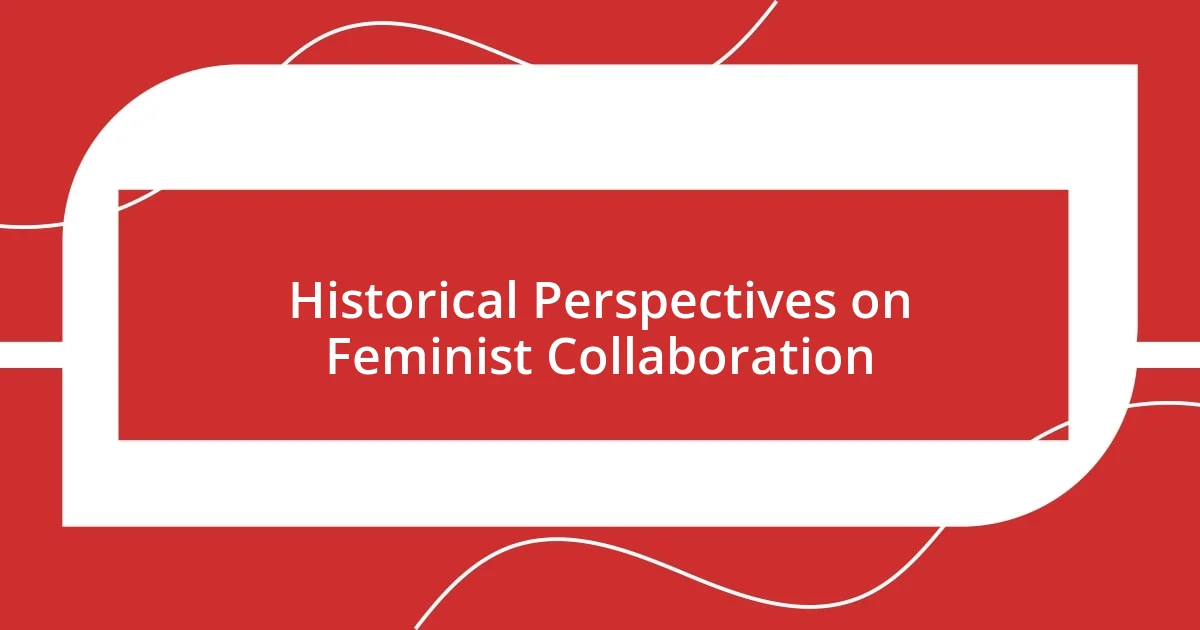
Historical Perspectives on Feminist Collaboration
Historically, feminist collaboration has been crucial in amplifying voices and advancing social change. Women have united across various movements, each contributing their unique experiences and perspectives. I recall learning about the early suffragists who organized together in the late 19th and early 20th centuries, demanding the right to vote. Their efforts weren’t just about suffrage but also sparked broader discussions around women’s rights.
- The Seneca Falls Convention in 1848 marked one of the first organized efforts for women’s rights in the U.S.
- During the civil rights movement, many feminists of color collaborated to highlight the intersections of race and gender.
- The establishment of the Women’s Liberation Movement in the 1960s and 70s saw various groups working together for equality.
These historical examples reflect a fundamental truth: collaboration among women has been a powerful force for change. It’s like a tapestry; each thread represents a different story, all woven together to create something impactful. The emotions felt during these gatherings—fear, passion, resilience—are a testament to the power of collective action. I sometimes find myself inspired by how these pioneers embraced both similarities and differences to forge new paths.
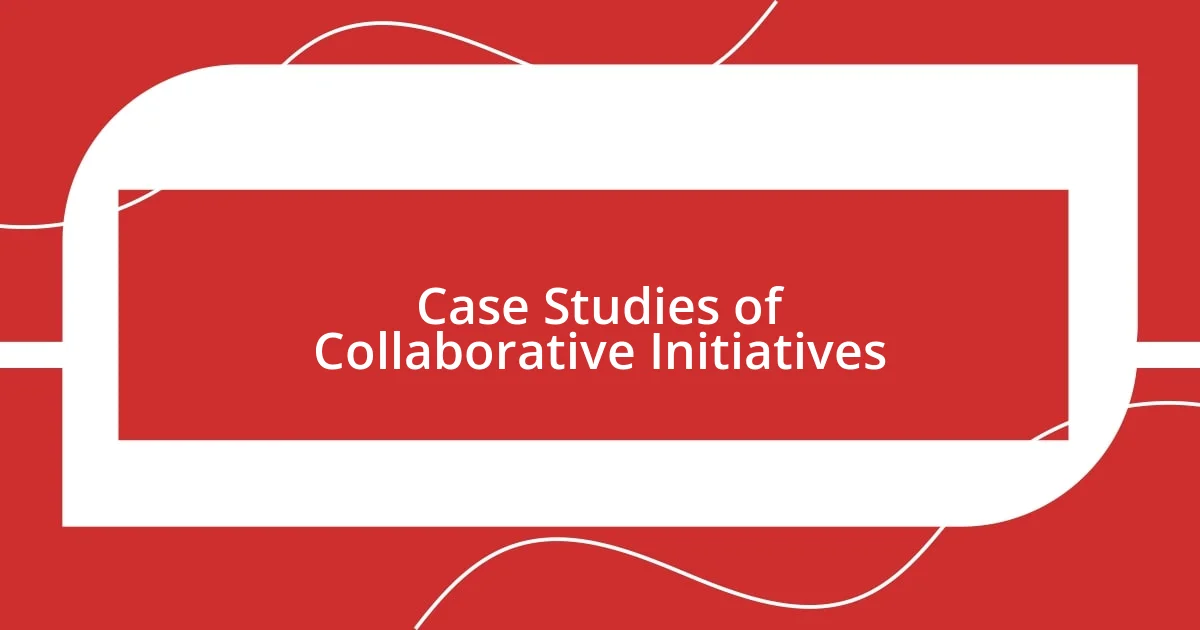
Case Studies of Collaborative Initiatives
Collaborative initiatives can take many forms, and I find it fascinating to look at specific case studies that illustrate the transformative power of working together. One notable example is the #MeToo movement. It began as a grassroots initiative, allowing countless individuals to share their stories of sexual harassment and assault. I remember following the stories of survivors and feeling a collective sense of empowerment, as voices that were once silenced finally found a platform. This collaboration across social media not only raised awareness but also sparked conversations globally, reshaping the feminist landscape.
Another inspiring case study is the Women’s March, which brings together individuals from diverse backgrounds to advocate for equal rights. The energy at these events is palpable; I recall standing in a dense crowd, surrounded by signs and passionate chants. There was an undeniable sense of unity, as women and allies linked arms, demonstrating the strength of collective action. The march has empowered individuals to push for change, showing how collaborative efforts can mobilize communities and create a ripple effect in the fight for gender equality.
Finally, consider the collaboration between feminist organizations and local communities to address domestic violence. In my experience, these partnerships focus on creating comprehensive support systems. One such initiative I witnessed involved workshops that educated both survivors and the broader community on available resources. I saw firsthand how people coming together—social workers, legal experts, and survivors—fostered an environment of trust and understanding. This collaboration not only provided immediate support but also worked towards long-term cultural change, emphasizing the importance of shared responsibility in tackling gender-based violence.
| Case Study | Description |
|---|---|
| #MeToo Movement | Grassroots initiative allowing individuals to share their stories, raising awareness of sexual harassment globally. |
| Women’s March | Annual event uniting diverse individuals to advocate for equal rights and inspire collective action. |
| Domestic Violence Collaboration | Partnerships between organizations and communities creating comprehensive support systems for survivors. |
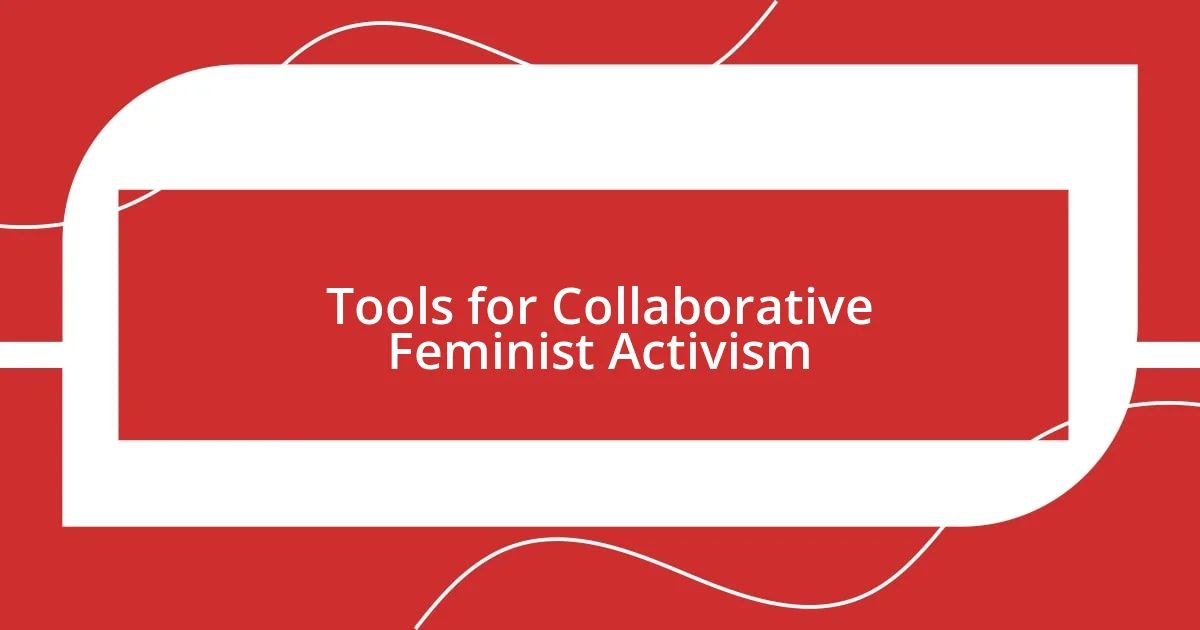
Tools for Collaborative Feminist Activism
One of the most powerful tools for collaborative feminist activism is technology, particularly social media. I often think back to when platforms like Twitter and Instagram became hubs for advocacy. Do you remember the hashtags that went viral, drawing attention to issues many felt were taboo? I was struck by how quickly people could come together online, sharing resources and amplifying each other’s voices. It’s as if a digital community was born overnight, transforming individual stories into a collective narrative for change.
Additionally, grassroots organizing plays a crucial role in collaborative efforts. I once attended a local meeting where women from various backgrounds gathered to strategize for a community initiative. The energy in the room was electric—everyone contributing their ideas and experiences. I realized then that collaboration thrives in these intimate settings, where shared goals can spark innovative strategies. Isn’t it amazing how these face-to-face connections can empower individuals to take action in their neighborhoods, forging bonds deeper than mere acquaintance?
Lastly, educational workshops provide an essential space for collaboration among activists and community members. I remember participating in a workshop focused on intersectionality in feminist activism. The discussions highlighted how different identities shape our experiences and activism. This wasn’t just a learning opportunity; it became a space where vulnerability was met with support and understanding. Isn’t that what we crave—to be seen and heard in our uniqueness? Workshops like these foster not only knowledge exchange but a sense of belonging, igniting passion for activism that transcends individual efforts.
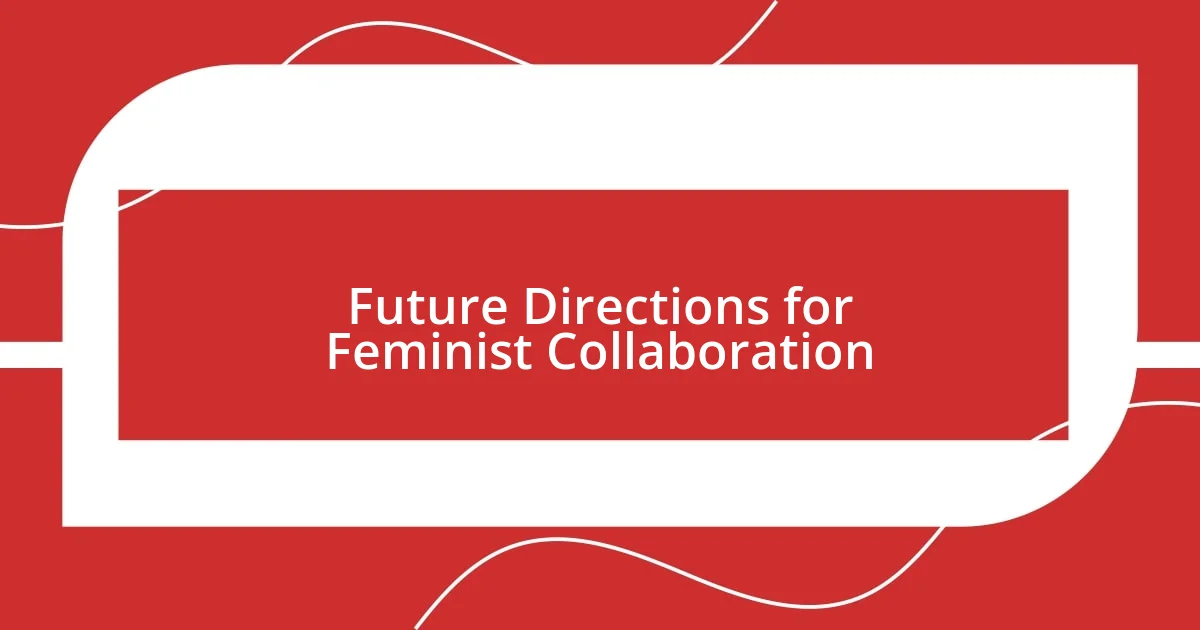
Future Directions for Feminist Collaboration
The future of feminist collaboration is brimming with potential as we harness the power of diversity and intersectionality. I envision a world where our initiatives not only celebrate our differences but also weave them into a cohesive narrative of shared struggle and strength. Imagine attending gatherings specifically designed to amplify the voices of marginalized women—these spaces would foster not just dialogue but genuine connections that lead to actionable change.
Embracing new technologies can also open up fresh avenues for collaboration. I often picture virtual forums where women from around the globe can connect in real-time, sharing insights and strategies tailored to their unique contexts. Isn’t it exciting to think about how these platforms can break down geographical barriers, allowing us to learn from each other’s successes and challenges instantaneously? My experience in online workshops has shown me that, even through a screen, we can create bonds that inspire and empower, fostering a global sisterhood.
Moreover, I believe that creating partnerships between feminist groups and businesses can yield transformative results. For instance, I participated in a local initiative where a women-owned business collaborated with a nonprofit to host community events. This connection resulted in not only raising awareness of local gender issues but also directly benefiting women entrepreneurs. How inspiring is it when we can leverage our distinct strengths to uplift each other? By cultivating these kinds of relationships, we can set the stage for a future that champions feminism in all its forms.










